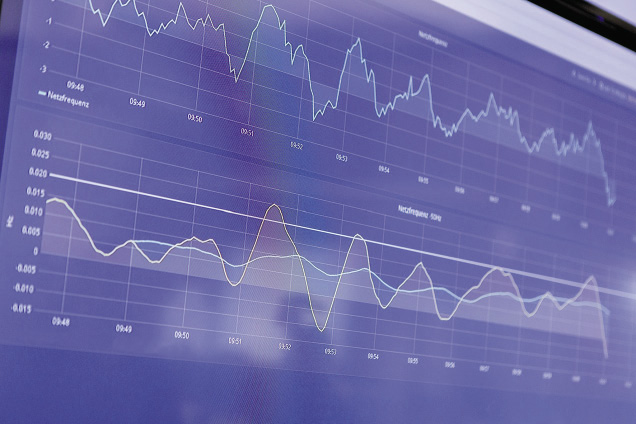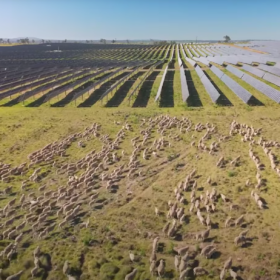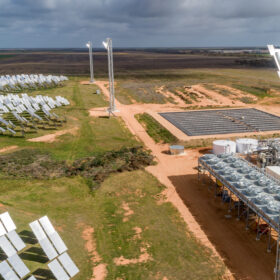Early insights from the VPP Demonstrations program run by the Australian Energy Market Operator (AEMO) suggest that VPPs are capable of delivering a range of services for the power system as well as create new revenue streams for owners of distributed energy resources like rooftop PV, battery storage and controllable load devices, such as air-conditioners or pool pumps.
As the decentralized generation model further matures and becomes a major force in the Australian electricity market, AEMO is seeking to set the scene for sophisticated solutions, such as VPPs, to be deployed at scale. In July last year, the market operator established its VPP Demonstrations to understand and share insights on the operational capability of VPPs. In its first knowledge sharing report released this week, AEMO analyses the market performance of its first program participant – South Australia’s Tesla-Energy Locals VPP.
The report highlights how the VPP performed during several events in the National Electricity Market (NEM). “This included immediately charging and discharging batteries in response to frequency deviations following a contingency event to maintain stable NEM frequency levels, and responding to energy market signals by batteries pre-charging in anticipation of elevated prices and discharging during the elevated price event,” AEMO’s Executive General Manager, Emerging Markets and Services, Violette Mouchaileh, said. “As a result of accessing aggregated and controllable DER through VPPs, the power system is supported by the provision of additional power when needed.”
Events requiring FCAS – mixed record
Understanding VPP’s operational capability for market participation was a critical reason for establishing the VPP Demonstration, so the first report focused on various SA VPP responses to Frequency Control Ancillary Services (FCAS) and energy events in South Australia. During the trial period, three significant contingency FCAS events demonstrated different responses from the SA VPP.
In October last year, the largest generator on the NEM – the 750 MW Kogan Kreek coal-fired power station in Queensland, tripped sending the power system frequency way below the normal operating range. The SA VPP detected this frequency excursion and responded immediately to inject power into the system and aid frequency recovery, as the swarm of South Australian batteries helped keep the lights on in Queensland, thousands of kilometers away.
In November, the SA VPP responded to Victoria and South Australia regional separation but with less success. The electrical disconnection of the South Australian region from the rest of the NEM power system for nearly five hours required the SA VPP to deliver its full amount enabled, 1 MW lower contingency FCAS. This time, it underdelivered.
In their explanation to AEMO, Tesla and Energy Locals said that fewer systems than expected had the appropriate frequency support settings enabled, which resulted in 83% of the expected response, or 828 kW rather than 1 MW bid. But this issue was identified and fixed immediately by remotely reconfiguring the non-compliant systems. “Since this event, Tesla informs AEMO that it has introduced daily checks on all systems to ensure they are responding according to the expected configuration requirements. It is expected that this approach will mitigate the risk of any future under-delivery,” the Tesla and Energy Locals said in their statement.
In December, the NEM experienced both high and then low-frequency events within 45 minutes of each other. The SA VPP was up to the task and responded immediately in both cases to first charge the batteries to lower system frequency, and then discharge the batteries to raise system frequency.
Events requiring energy response – impeccable performance
In April, AEMO observed the SA VPP behavior regarding a negative pricing event with a focus on pre-charging and discharging behavior the batteries undertake in preparation for forecast high and low events. The April event took place before the launch of the VPP Demonstrations but clearly showed the typical behavior of the SA VPP in anticipation of negative prices with batteries pre-discharging to make sure there will be able to charge while the prices are in the negative territory.
In January this year, AEMO observed the behavior of the SA VPP in response to energy spot prices over the course of a week. This provided evidence that VPPs do respond to energy market signals, with batteries pre-charging in anticipation of elevated prices and discharging during the elevated price event.
According to AEMO, all these events have shown that VPPs can benefit participating consumers by sharing the value earned through the VPP participating in FCAS or responding to energy market prices. On top of that, VPPs can benefit all other consumers by creating more competition in these markets to reduce prices and, if VPPs scale up enough, potentially deferring/displacing the need for large-scale generation assets.
Consumer experience
But, to further understand the experience of residents participating in VPPs, AEMO, in partnership with the Australian Renewable Energy Agency (ARENA), is undertaking a customer insights survey to existing VPP Demonstration customers. The consumer experience encapsulates the initial sales and marketing process, installation of equipment, operation in a VPP and perceived/realized value delivered.
“The VPP Trial is important because it will not only help us answer technical questions about this exciting new technology, but how to make it work for people and how they use energy in their homes and businesses,” Lynne Gallagher, interim CEO of Energy Consumers Australia, said. “Energy is deeply embedded in the way we live our lives, and bringing consumers into the innovation process is a critical part of developing successful new energy services.”
Moving forward, the VPP Demonstrations will continue to gain learnings regarding the effectiveness of VPPs adding value to the power system and responding to events on the power system. Clearly, as the number of the VPP Demonstrations participants grows, a deeper understanding will be gained.
Last month, AGL registered as the second participant in the VPP Demonstration, however, at the time of publication, AEMO has not had the opportunity to review any operational data from AGL. The market operator expects more participants to join over the coming months.
In Australia by 2040, AEMO’s Draft 2020 Integrated System Plan forecasts that 63% of coal-fired generation will retire, the equivalent annual electricity needs of all Australian homes and a proportion of businesses. Meanwhile, DER generation capacity is expected to double or even triple, with rooftop solar to provide 22% of total energy, between 32 GW and 50 GW.
Further, AEMO estimates that embedded battery storage capacity, including VPPs, will total between 17 GW and 30 GW. What this shows is that Australia is a world leader in DERs, paving the way for VPPs to significantly contribute to Australia’s future energy system.
This content is protected by copyright and may not be reused. If you want to cooperate with us and would like to reuse some of our content, please contact: editors@pv-magazine.com.








1 comment
By submitting this form you agree to pv magazine using your data for the purposes of publishing your comment.
Your personal data will only be disclosed or otherwise transmitted to third parties for the purposes of spam filtering or if this is necessary for technical maintenance of the website. Any other transfer to third parties will not take place unless this is justified on the basis of applicable data protection regulations or if pv magazine is legally obliged to do so.
You may revoke this consent at any time with effect for the future, in which case your personal data will be deleted immediately. Otherwise, your data will be deleted if pv magazine has processed your request or the purpose of data storage is fulfilled.
Further information on data privacy can be found in our Data Protection Policy.